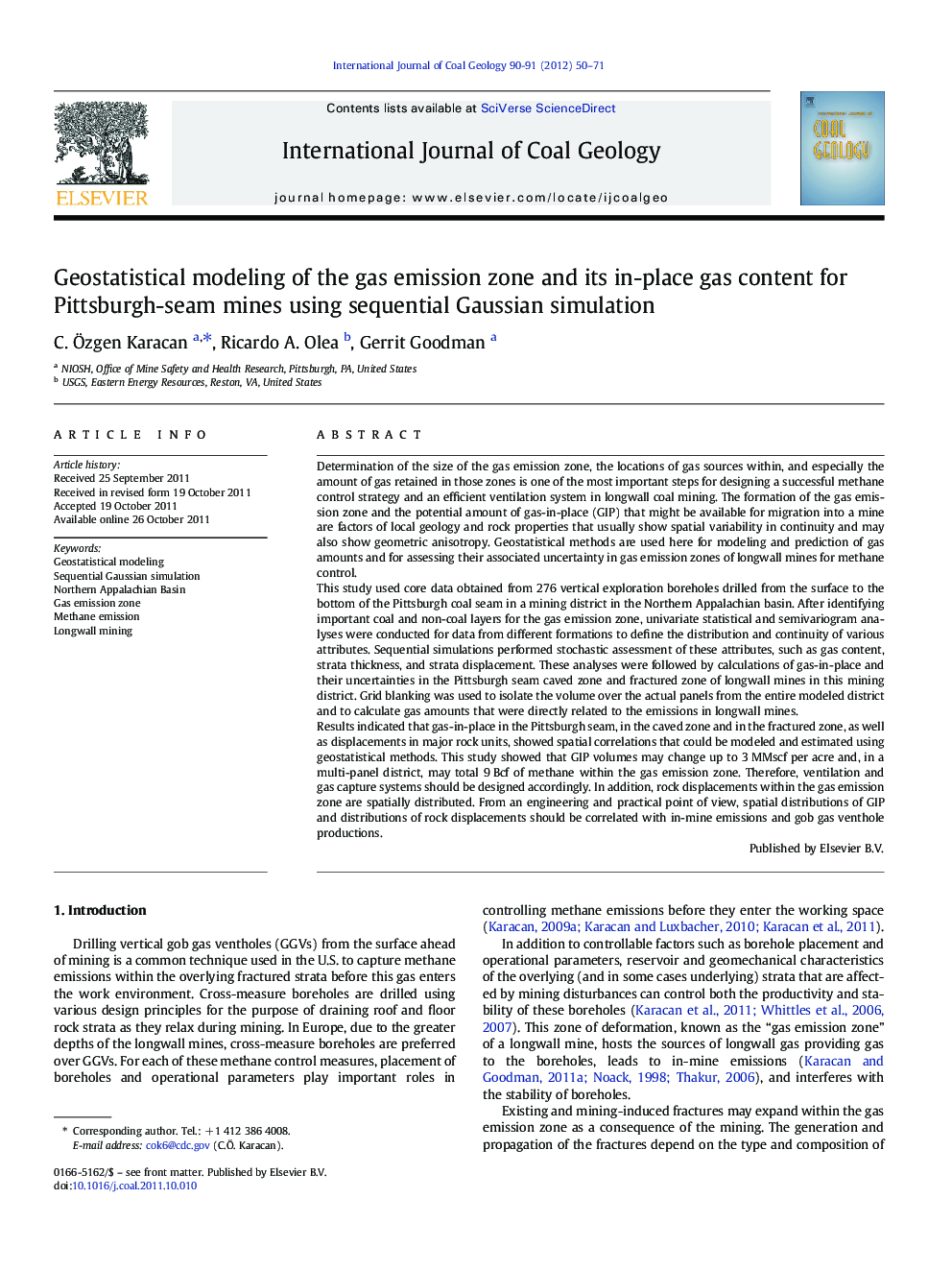| کد مقاله | کد نشریه | سال انتشار | مقاله انگلیسی | نسخه تمام متن |
|---|---|---|---|---|
| 1753721 | 1522602 | 2012 | 22 صفحه PDF | دانلود رایگان |

Determination of the size of the gas emission zone, the locations of gas sources within, and especially the amount of gas retained in those zones is one of the most important steps for designing a successful methane control strategy and an efficient ventilation system in longwall coal mining. The formation of the gas emission zone and the potential amount of gas-in-place (GIP) that might be available for migration into a mine are factors of local geology and rock properties that usually show spatial variability in continuity and may also show geometric anisotropy. Geostatistical methods are used here for modeling and prediction of gas amounts and for assessing their associated uncertainty in gas emission zones of longwall mines for methane control.This study used core data obtained from 276 vertical exploration boreholes drilled from the surface to the bottom of the Pittsburgh coal seam in a mining district in the Northern Appalachian basin. After identifying important coal and non-coal layers for the gas emission zone, univariate statistical and semivariogram analyses were conducted for data from different formations to define the distribution and continuity of various attributes. Sequential simulations performed stochastic assessment of these attributes, such as gas content, strata thickness, and strata displacement. These analyses were followed by calculations of gas-in-place and their uncertainties in the Pittsburgh seam caved zone and fractured zone of longwall mines in this mining district. Grid blanking was used to isolate the volume over the actual panels from the entire modeled district and to calculate gas amounts that were directly related to the emissions in longwall mines.Results indicated that gas-in-place in the Pittsburgh seam, in the caved zone and in the fractured zone, as well as displacements in major rock units, showed spatial correlations that could be modeled and estimated using geostatistical methods. This study showed that GIP volumes may change up to 3 MMscf per acre and, in a multi-panel district, may total 9 Bcf of methane within the gas emission zone. Therefore, ventilation and gas capture systems should be designed accordingly. In addition, rock displacements within the gas emission zone are spatially distributed. From an engineering and practical point of view, spatial distributions of GIP and distributions of rock displacements should be correlated with in-mine emissions and gob gas venthole productions.
Figure optionsDownload as PowerPoint slideHighlights
► Core data obtained from 276 vertical boreholes were used for geostatistical analyses.
► Sequential Gaussian simulations were performed for gas content, strata thickness, and strata displacement.
► GIP and their uncertainties in the Pittsburgh seam caved zone and fractured zone of longwall mines were calculated.
► This study showed that GIP volumes may change up to 3 MMscf per acre.
Journal: International Journal of Coal Geology - Volumes 90–91, 1 February 2012, Pages 50–71